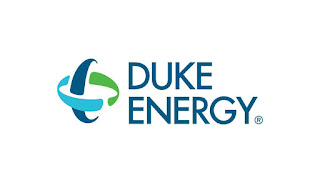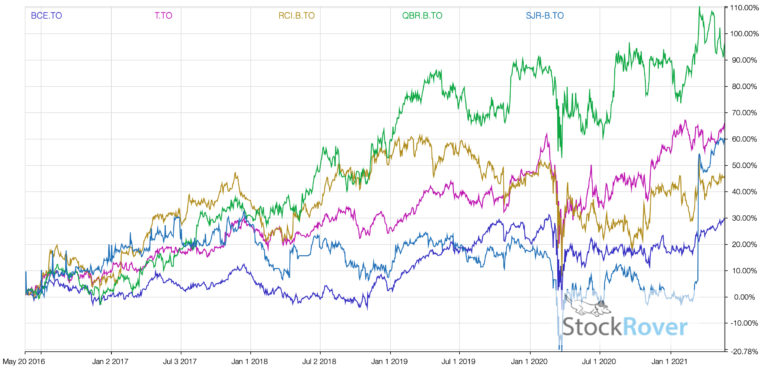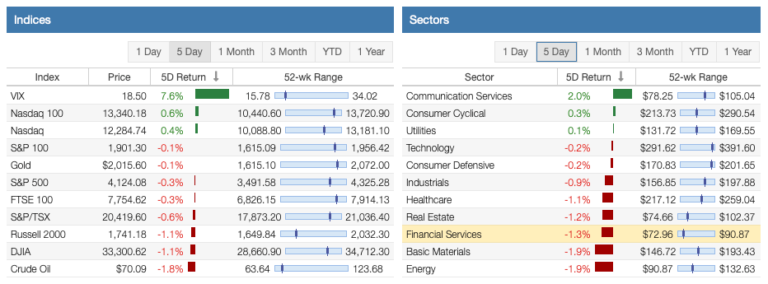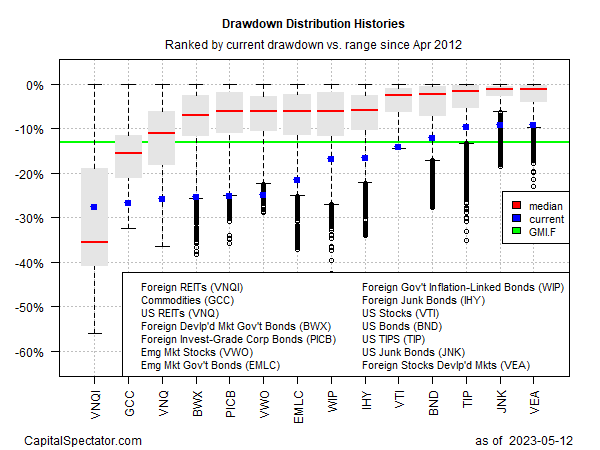
Duke Energy (DUK) Dividend Stock Analysis
Linked here is a detailed quantitative analysis of Duke Energy (DUK). Below are some highlights from the above linked analysis:
Company Description: Duke Energy Corp. merged with Progress Energy in mid-2012, and is the largest electric power holding company in the U.S., serving more than 7 million customers in six states.
Fair Value: In calculating fair value, I consider the NPV MMA Differential Fair Value along with these four calculations of fair value, see page 2 of the linked PDF for a detailed description:
1. Avg. High Yield Price
2. 20-Year DCF Price
3. Avg. P/E Price
4. Graham Number
DUK is trading at a discount to only 3.) above. When also considering the NPV MMA Differential, the stock is trading at a 69.5% premium to its calculated fair value of $61.67. DUK did not earn any Stars in this section.
Dividend Analytical Data: In this section there are three possible Stars and three key metrics, see page 2 of the linked PDF for a detailed description:
1. Free Cash Flow Payout
2. Debt To Total Capital
3. Key Metrics
4. Dividend Growth Rate
5. Years of Div. Growth
6. Rolling 4-yr Div. > 15%
DUK earned one Star in this section for 3.) above. DUK earned a Star for having an acceptable score in at least two of the four Key Metrics measured. The company has paid a cash dividend to shareholders every year since 1926 and has increased its dividend payments for 18 consecutive years.
Dividend Income vs. MMA: Why would you assume the equity risk and invest in a dividend stock if you could earn a better return in a much less risky money market account (MMA) or Treasury bond? This section compares the earning ability of this stock with a high yield MMA. Two items are considered in this section, see page 2 of the linked PDF for a detailed description:
1. NPV MMA Diff.
2. Years to > MMA
The NPV MMA Diff. of the $384 is below the $1,700 target I look for in a stock that has increased dividends as long as DUK has. The stock’s current yield of 3.77% exceeds the 2.74% estimated 20-year average MMA rate.
Peers: The company’s peer group includes: The Southern Company (SO) with a 3.9% yield, American Electric Power Co., Inc. (AEP) with a 3.3% yield and CenterPoint Energy, Inc. (CNP) with a 2.5% yield.
Conclusion: DUK did not earn any Stars in the Fair Value section, earned one Star in the Dividend Analytical Data section and did not earn any Stars in the Dividend Income vs. MMA section for a total of one Star. This quantitatively ranks DUK as a 1-Star Very Weak stock.
Using my D4L-PreScreen.xls model, I determined the share price would need to decrease to $58.98 before DUK’s NPV MMA Differential increased to the $1,700 minimum that I look for in a stock with 18 years of consecutive dividend increases. At that price the stock would yield 6.7%.
Resetting the D4L-PreScreen.xls model and solving for the dividend growth rate needed to generate the target $1,700 NPV MMA Differential, the calculated rate is 6.8%. This dividend growth rate is higher than the 1.0% used in this analysis, thus providing no margin of safety. DUK has a risk rating of 2.00 which classifies it as a Medium risk stock.
Operating primarily in North Carolina and South Carolina, DUK’s regulated utilities provide a stable source of earnings. The company’s international businesses provide steady cash flows and earnings diversity. Currently, DUK’s debt to total capital of 58% (up from 57%), is above my 45% maximum, while its free cash flow payout of -148% (last was 2968%), is not sustainable over the long-term. The stock is currently trading at a 69.5% premium to my calculated fair value. As such, I will not add to my position until the dividend fundamentals improve.
Disclaimer: Material presented here is for informational purposes only. The above quantitative stock analysis, including the Star rating, is mechanically calculated and is based on historical information. The analysis assumes the stock will perform in the future as it has in the past. This is generally never true. Before buying or selling any stock you should do your own research and reach your own conclusion. See my Disclaimer for more information.
Full Disclosure: At the time of this writing, I was long in DUK (0.4% of my Dividend Growth Stocks Portfolio).
Related Articles:
– Abbvie Inc. (ABBV) Dividend Stock Analysis
– AFLAC Incorporated (AFL) Dividend Stock Analysis
– Apple Inc. (AAPL) Dividend Stock Analysis
– Amgen, Inc. (AMGN) Dividend Stock Analysis
Published at Thu, 30 Jun 2022 23:00:00 -0700





